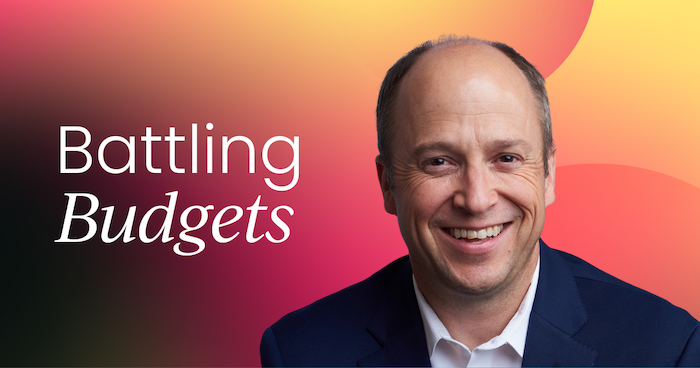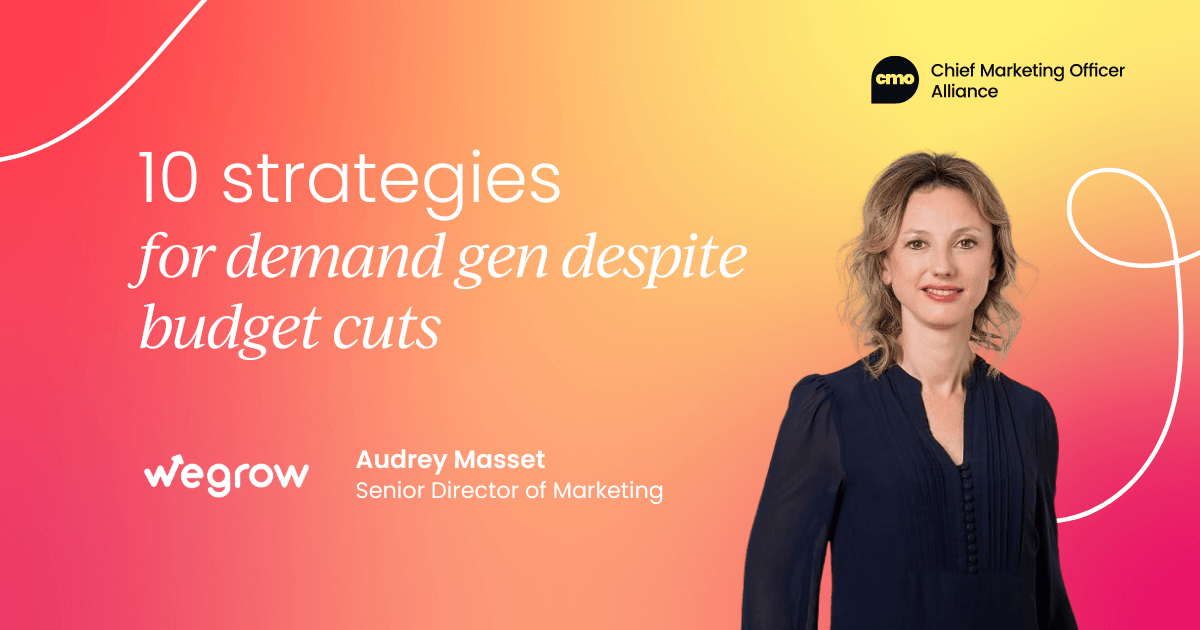Marketing leaders have always been tasked with making the most of their budgets, but in 2025, the challenge has intensified.
Economic uncertainty continues to impact businesses across all sizes, affecting revenue goals and forcing marketing teams to rethink their spending priorities.
According to the CMO Insights Report 2025, the extent of this impact varies by organization size:
- Startups: 83% report revenue challenges due to economic conditions.
- SMEs: 84% feel the pinch.
- Scale-ups: 50% affected.
- Enterprises: 33% report budgetary strain.
With resources constrained, CMOs are forced to become more strategic, balancing short-term performance needs with long-term brand-building investments.
Investing in MarTech – to spend or not to spend?
Technology remains an instrumental investment for marketing teams, but budget constraints mean CMOs must be more selective. The CMO Insights Report highlights key barriers preventing leaders from addressing gaps in their tech stacks:
- Lack of budget (62%) remains the biggest challenge.
- Integration difficulties (61%) are nearly as problematic.
- Lack of time to research solutions (34%) adds another layer of complexity.
Interestingly, while overall budgets are tightening, spending on MarTech is increasing – especially among startups, where the percentage of budget allocated to tools has doubled from 16% in 2023/24 to 33% in 2024/25.
Enterprises, on the other hand, have reduced their MarTech spending from 20% to 12% over the same period, possibly due to consolidation efforts or shifting priorities.

Marketing budgets are shrinking – but spending is growing
A paradox is emerging in marketing budgets. According to The CMO Survey 2024:
- Marketing budgets as a percentage of company budgets have declined to 10.1%, down from 13.8% in 2022.
- Marketing budgets as a percentage of revenue fell to 7.7%, the lowest level in three years.
- Actual marketing spending, however, is increasing – with digital marketing up by 3% and expected to grow 12.7% in the next 12 months.
Where is the money going? Across the board, companies plan to increase investment in:
- Customer relationship management (+6.9%)
- Customer experience (+5.6%)
- Branding (+7.0%)
- New product introductions (+8.1%)
- New service introductions (+4.3%)
For the first time in two years, traditional advertising spend is also growing – albeit by a modest 0.8%.
This paradox suggests that while marketing departments may have less proportionally to work with, they are doubling down on high-impact areas.
Digital transformation, data-driven customer insights, and performance marketing are taking center stage, allowing teams to stretch their budgets further.
The shift also highlights an increasing emphasis on ROI-driven spending, where every investment must demonstrate clear value in customer acquisition, retention, or brand equity.
Another key takeaway from these figures is the growing disparity between long-term brand investment and short-term performance marketing.
Marketers report that while their ideal branding budget split would be 50% long-term and 50% short-term, the reality is skewed towards immediate gains, with 31.2% dedicated to long-term brand building versus 68.8% focused on short-term performance.
This misalignment suggests a risk of underinvesting in brand equity, which could impact sustainable growth over time.
With marketing increasingly seen as a discretionary expense, CMOs must also work harder to justify their budgets.
Since 44.6% of budget cuts impact marketing disproportionately, marketing leaders must refine their metrics and reporting to prove value. Showing direct correlations between marketing activities and business growth will be critical in securing continued investment.

The shift toward smarter hiring and budget optimization
Economic pressure isn’t just shaping where budgets are spent – it’s also influencing how marketing teams are built. Some leaders are embracing more flexible hiring strategies to get the most out of their budgets.
Sam Tarantino, Founder of Harmonic Reach Marketing, shares his approach:
“One thing we look for to make the most of our budget while getting the best people available is not shying away from hiring women returning to work after extended leave from having a child. We’ve found some incredible people that otherwise may not have been available in our salary band.”
Tarantino’s approach highlights a growing trend among forward-thinking companies: tapping into underutilized talent pools to find high-quality hires at competitive salaries.
By being open to hiring candidates who may have previously been overlooked – such as parents returning to the workforce – companies can access skilled professionals who bring experience, fresh perspectives, and motivation to prove their value.
Meanwhile, John McKinney, Director of Marketing and Partnerships at Cornerstone Licensing, echoes a familiar sentiment:
“As has been the case often throughout most of our careers – and this year to a greater degree – we are being asked to do more with less. It forces you to get creative.”
This statement underscores a harsh reality for CMOs: resource constraints are now the norm, not the exception. Creativity in hiring, outsourcing, and operational efficiency is no longer just a competitive advantage – it’s a necessity.
Businesses that fail to embrace new ways of working, such as fractional hiring or leveraging specialized consultants, risk falling behind competitors who maximize every dollar spent.
Fractional hiring is another approach gaining traction. When engaging marketing experts at a fractional level, businesses can allocate budgets more effectively while achieving both short- and long-term objectives.
This allows companies to access senior-level expertise without the full-time salary commitment, ensuring they can drive strategic growth even when budgets are tight.
Ultimately, these strategies reinforce the idea that agility is key in modern marketing leadership. Whether through hiring decisions, budget allocation, or tech investments, CMOs who adapt quickly and embrace flexible solutions will be best positioned for success.
What’s next for marketing budgets?
While the current business climate presents challenges, there are signs of optimism. Peter Isaacson, CMO at Invoca, notes:
“The economy is still creating pressure on B2B SaaS businesses. Deals are more difficult to close, and deal sizes are typically smaller. However, with other areas of the economy performing well and interest rates falling, we are expecting an improved business climate. We're just waiting for that improvement to happen.”
As CMOs anticipate these positive shifts, the key will be preparing for growth while maintaining financial discipline.
With pressure still mounting on budgets, leaders must continue to focus on efficiency, adaptability, and strategic investment.
- Proactive budget justification – As marketing budgets remain under scrutiny, CMOs must tie every dollar spent to measurable business outcomes. Strengthening analytics and proving ROI will be essential for defending and securing future funding.
- Balancing brand vs. performance – While short-term performance marketing dominates spending, an imbalance in brand investment could create long-term challenges. Smart CMOs will push for a healthier mix to drive sustained growth.
- Investing in scalable strategies – With economic recovery on the horizon, marketing leaders must prioritize flexible, scalable strategies. Whether through modular MarTech investments or dynamic hiring approaches, agility will be the key to success.
The bottom line? Marketing budgets may be under pressure, but strategic investment – whether in technology, people, or brand-building – remains critical to long-term success.
It’s important, then, to stay agile and forward-thinking as a CMO to ensure your teams are ready to capitalize on opportunities as economic conditions improve.



 Follow us on LinkedIn
Follow us on LinkedIn





